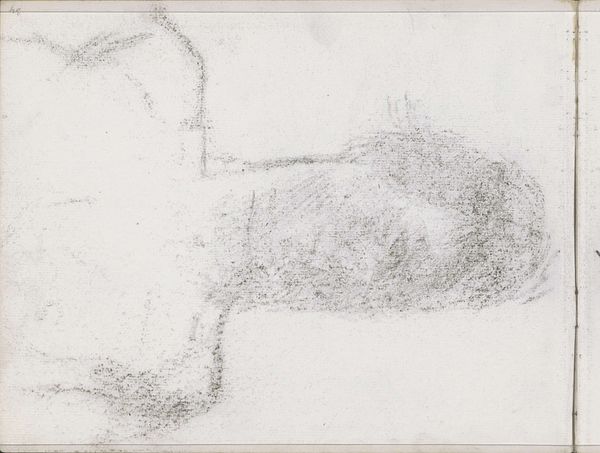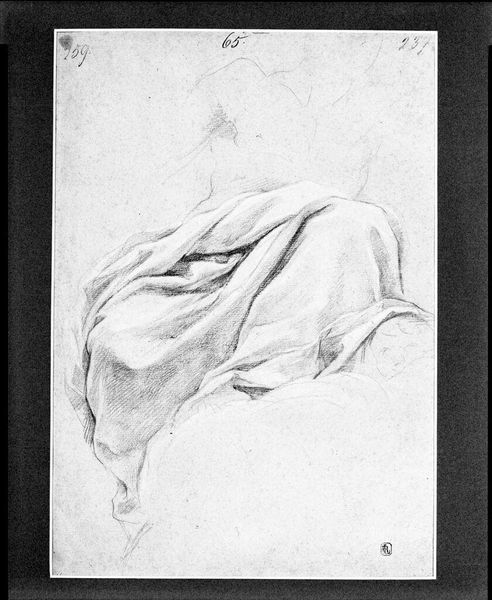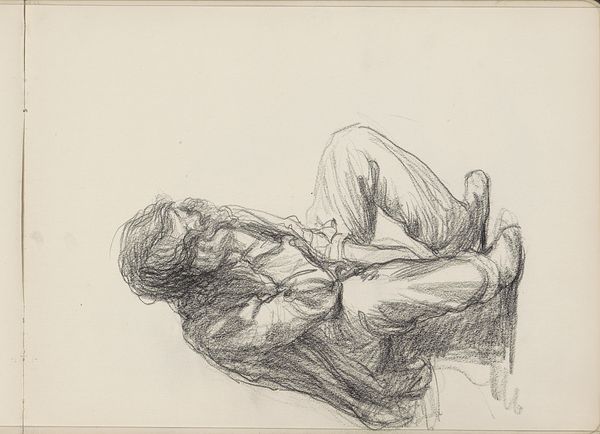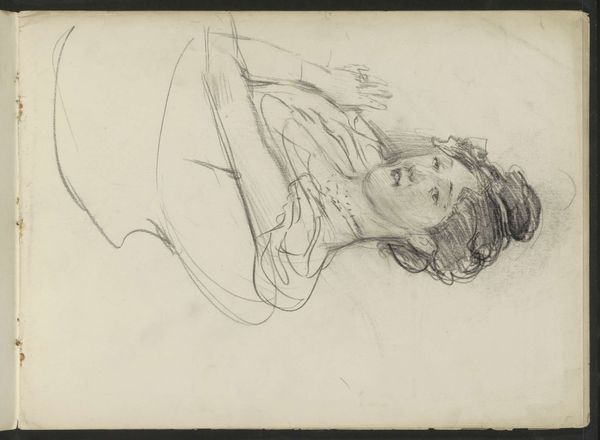
drawing, dry-media, pencil
#
pencil drawn
#
drawing
#
pencil sketch
#
charcoal drawing
#
form
#
dry-media
#
pencil drawing
#
pencil
#
line
#
portrait drawing
#
academic-art
#
realism
Dimensions: 4 5/8 x 6 7/8 in. (11.7 x 17.5 cm)
Copyright: Public Domain
Editor: So, here we have Asher Brown Durand's "Drapery Study" from his sketchbook, created sometime between 1796 and 1886. It's a delicate pencil drawing. It strikes me as a really focused study. What stands out to you in this piece? Curator: This drawing provides an entry point into understanding the socio-political functions of representation during Durand's time. A seemingly simple study of fabric is deeply intertwined with constructing and reinforcing ideas about status, class, and even gender. What textures and forms did clothing create in comparison to skin? And how might an image like this contribute to the visual vocabulary used to define social roles and hierarchies? Editor: That's fascinating, I hadn’t considered the societal implications. The folds almost seem to conceal something. Curator: Exactly! The folds and shadows obscure as much as they reveal. This deliberate obscurity invites us to consider what societal norms and expectations are being performed, and perhaps even challenged. We can then see Durand’s drawing is participating in shaping and perhaps solidifying, the cultural meanings associated with concealment and revelation in that period. Who gets to hide, who is forced to reveal? Editor: So it's less about the technical skill and more about what the artist, and even the viewer, brings to the work culturally? Curator: Precisely. Durand's choices, and our interpretations, are all filtered through a lens shaped by historical context, societal power dynamics, and the ever-evolving dialogue between art and the world around it. It makes one think about fashion's role today. Editor: That gives me a lot to think about. Thanks for illuminating it! Curator: It's been a pleasure; seeing art through these different angles reveals fresh and powerful perspectives.
Comments
No comments
Be the first to comment and join the conversation on the ultimate creative platform.













